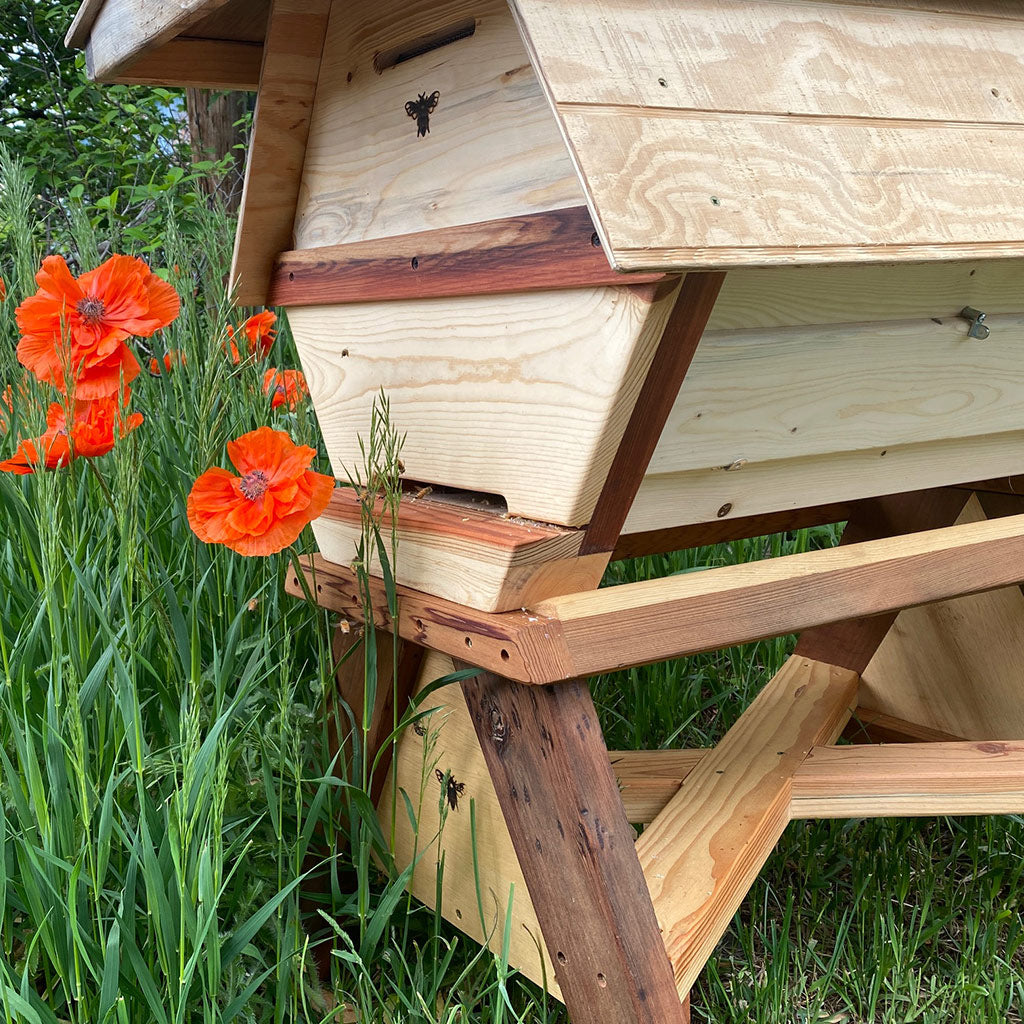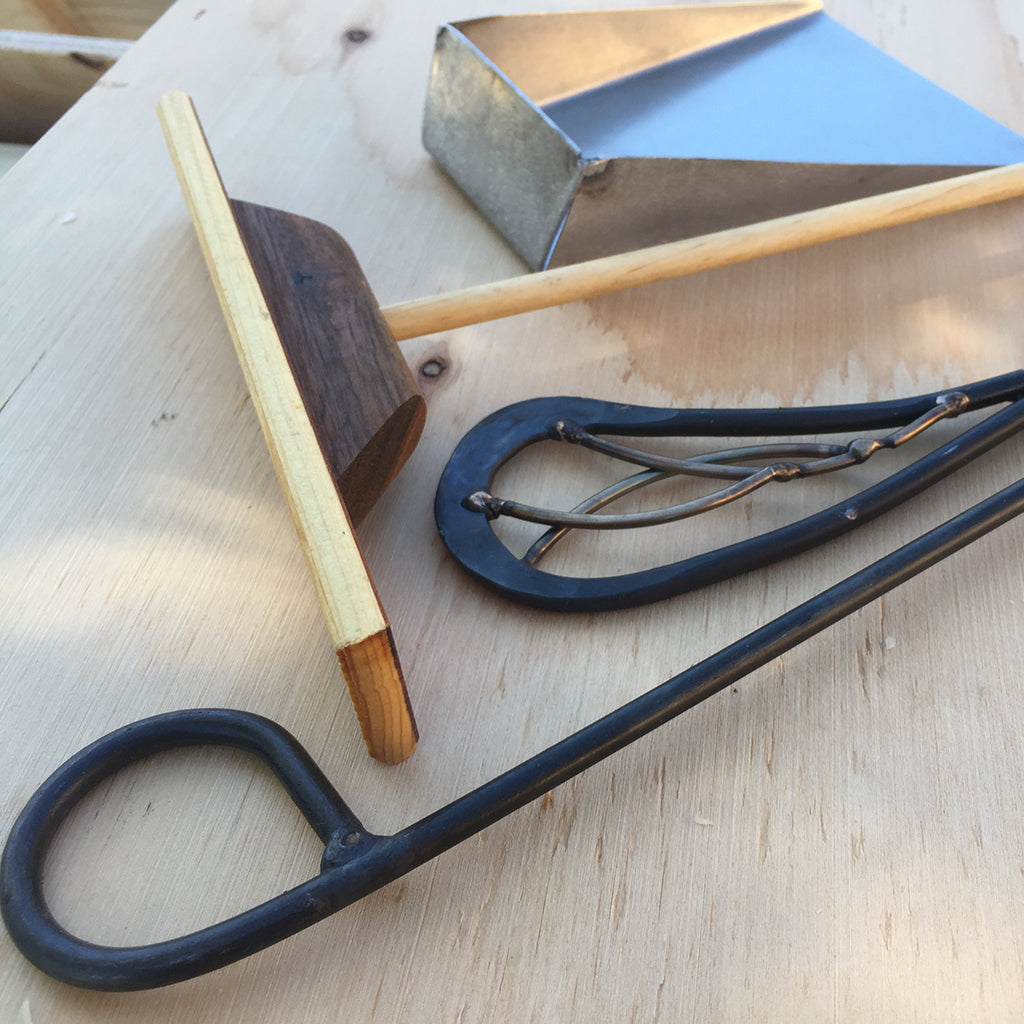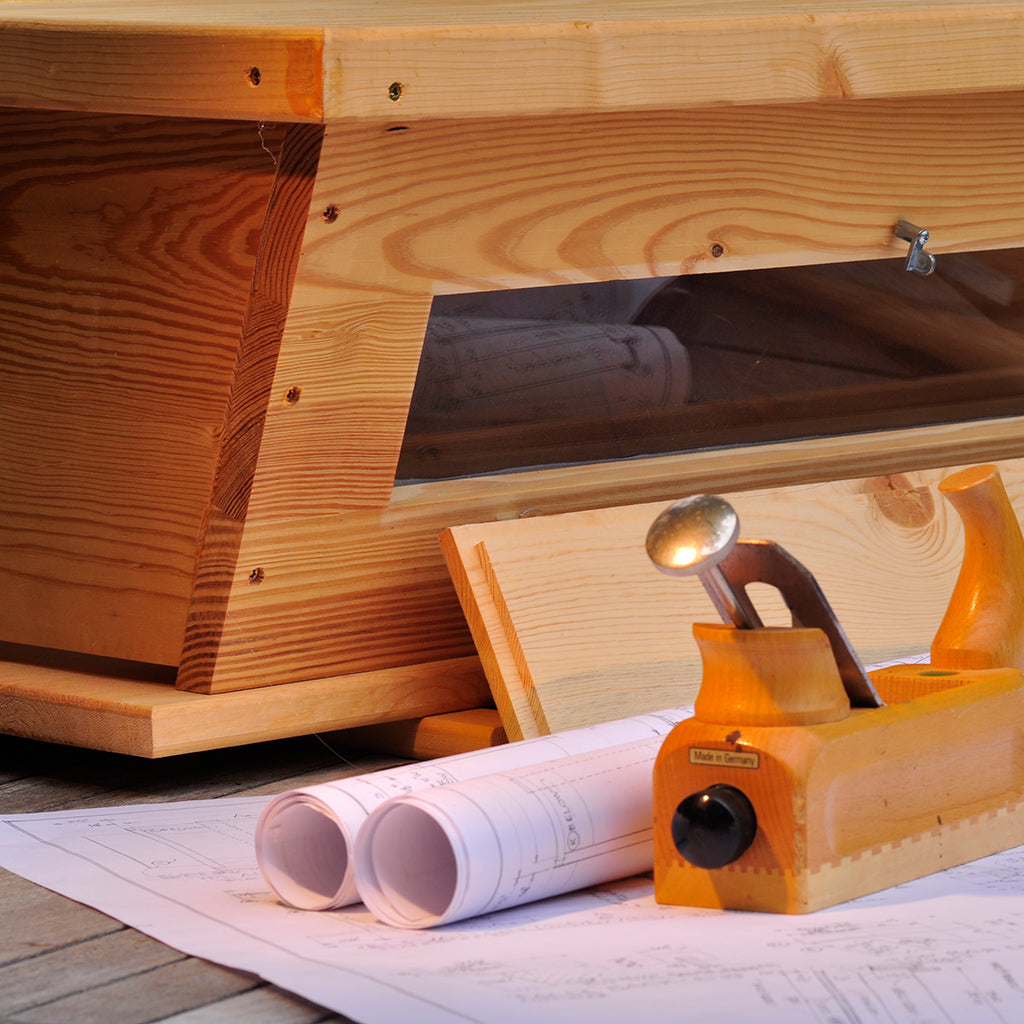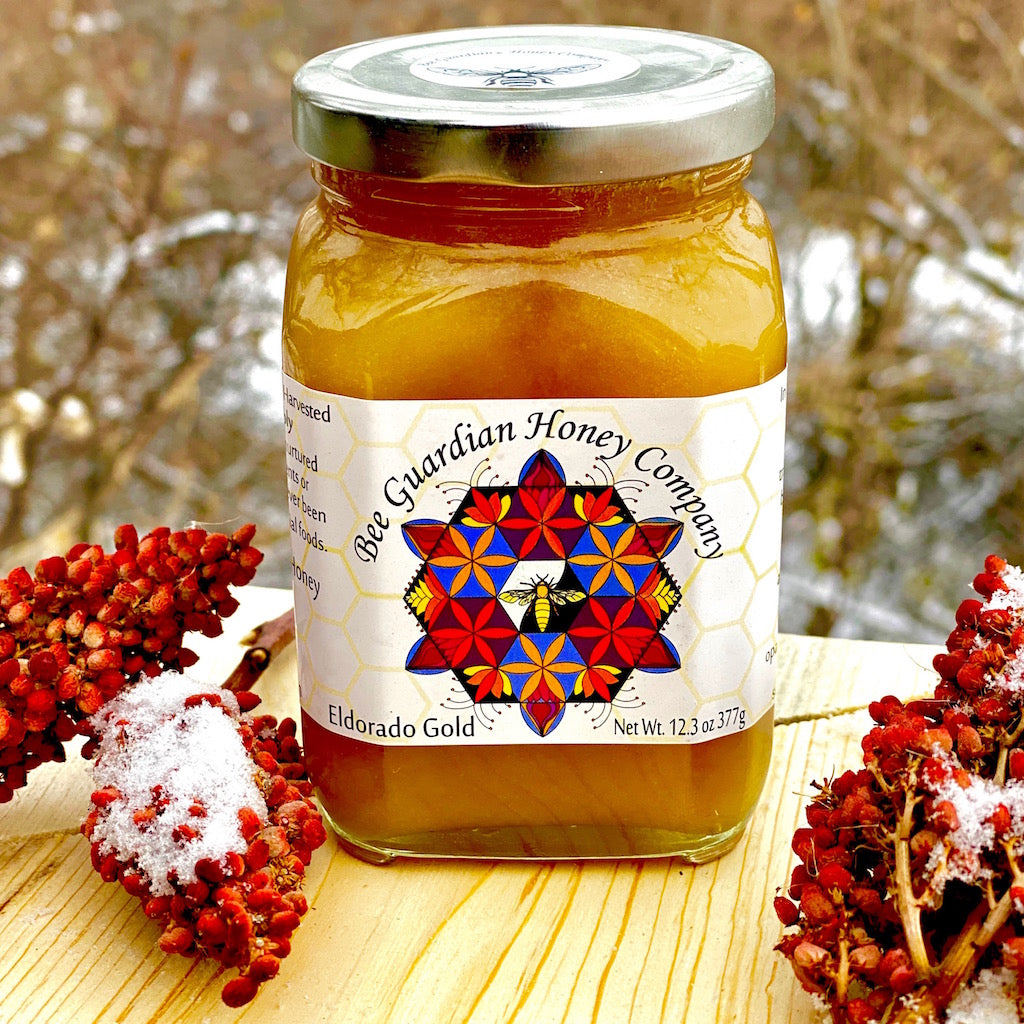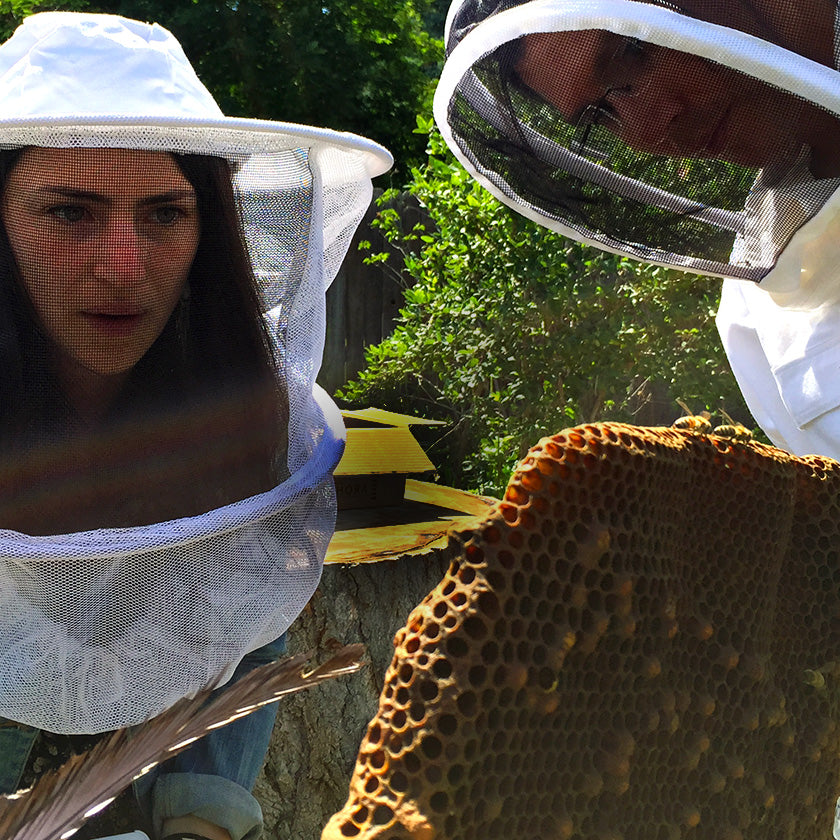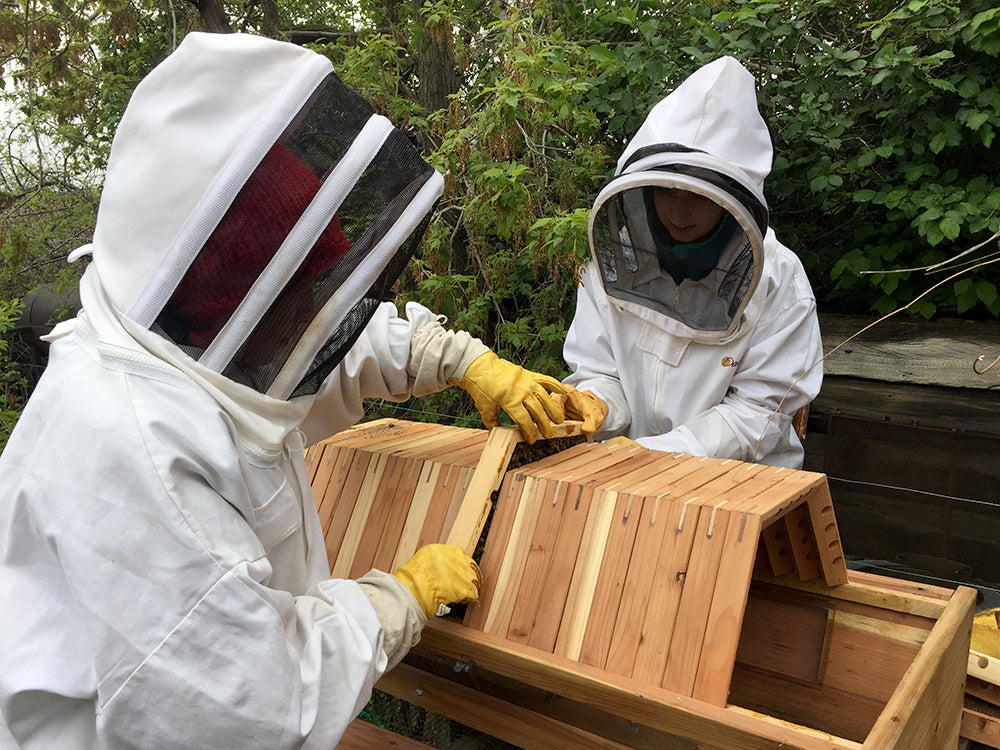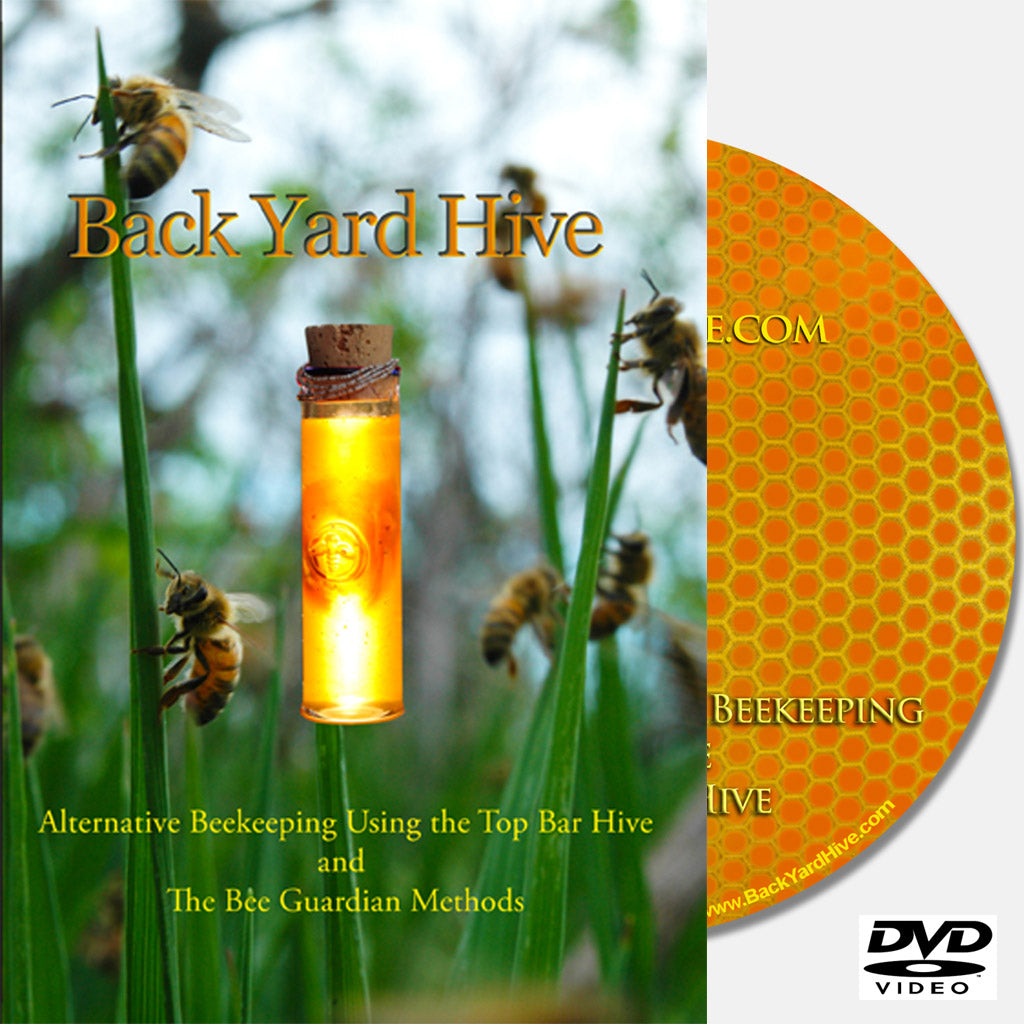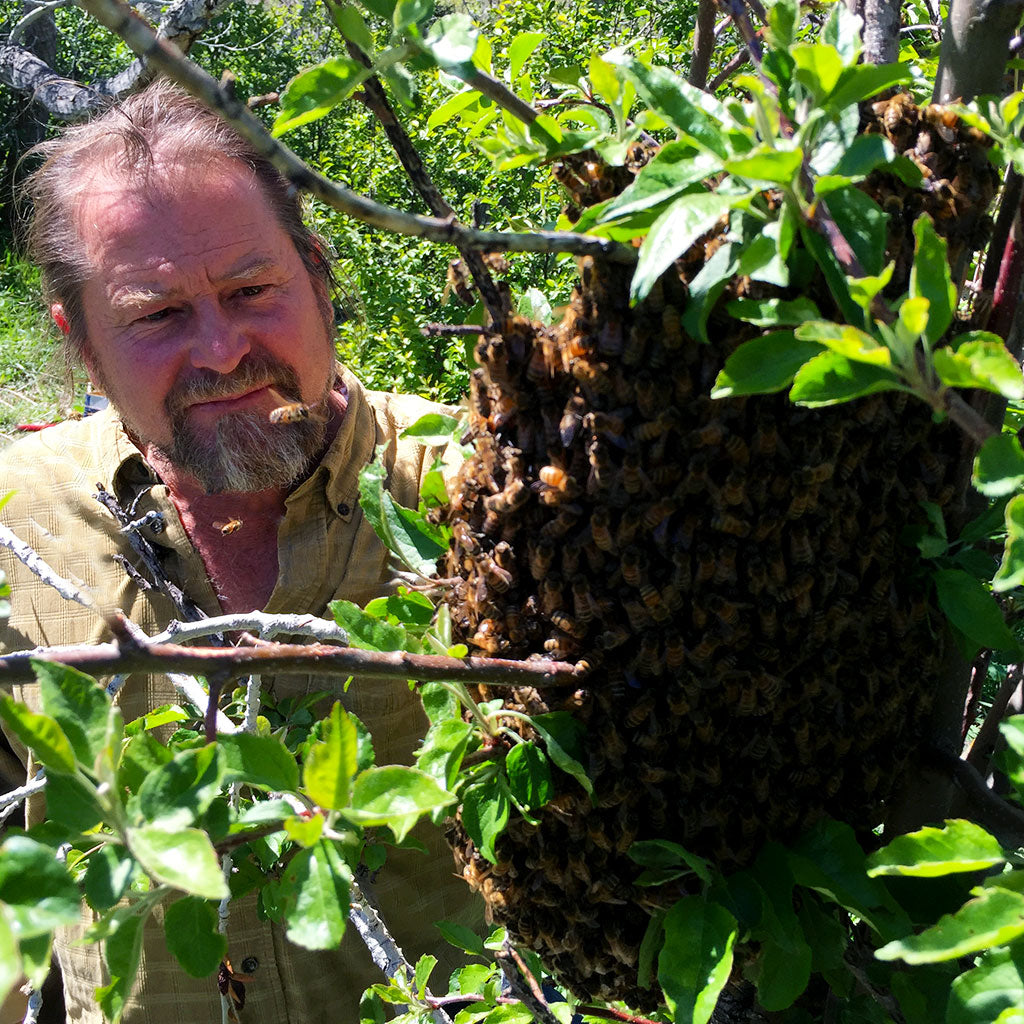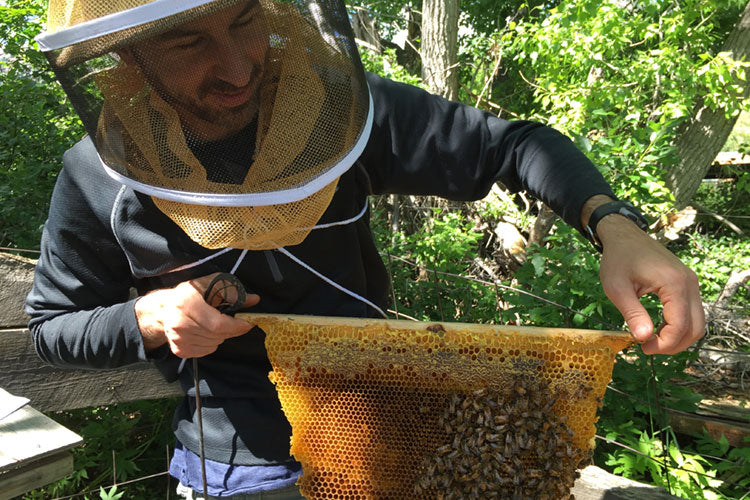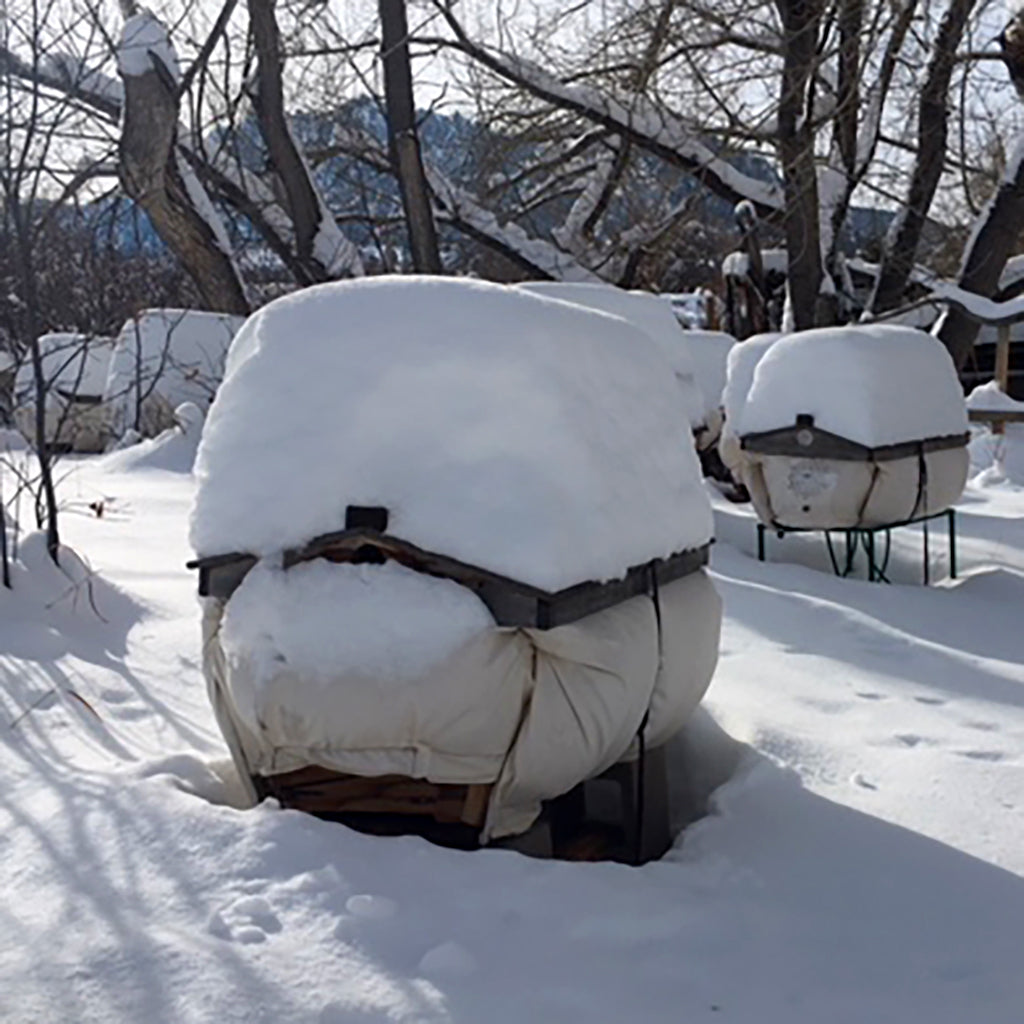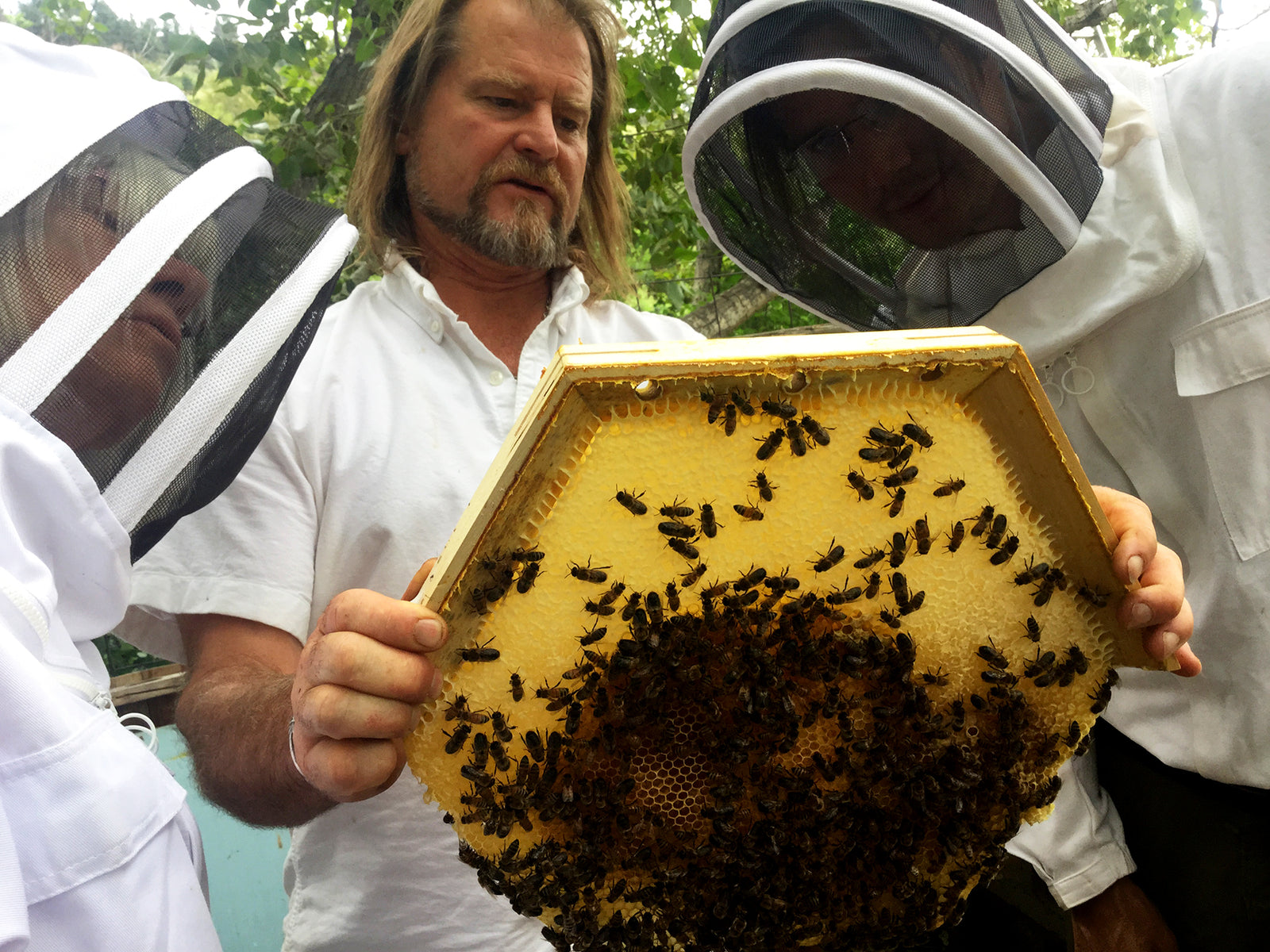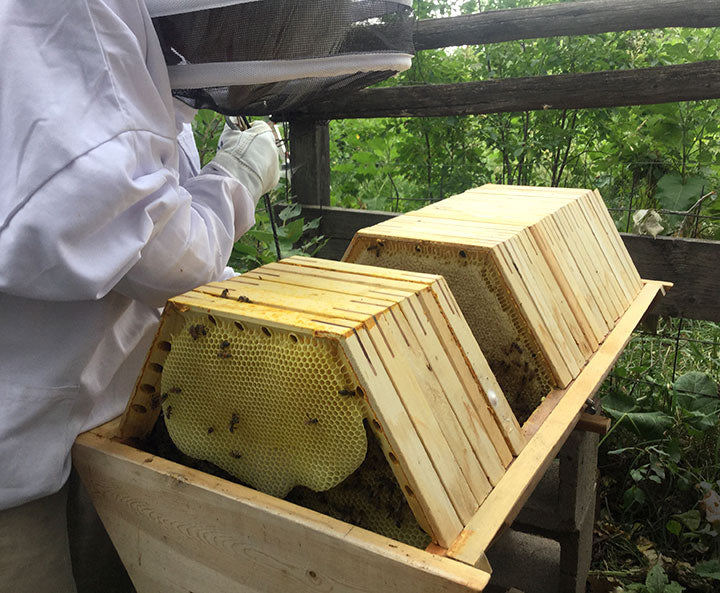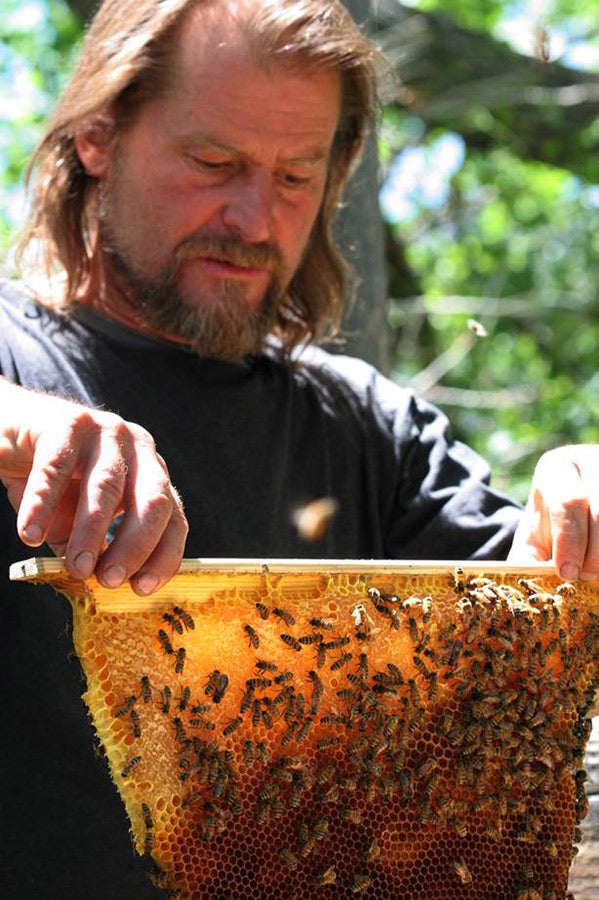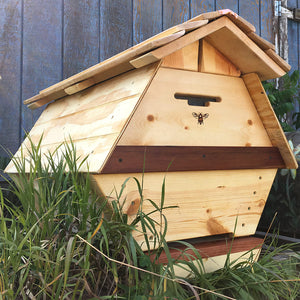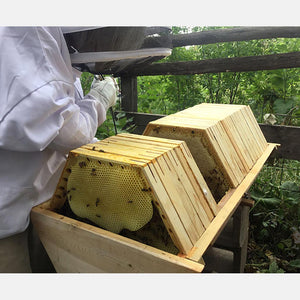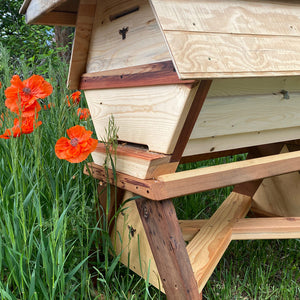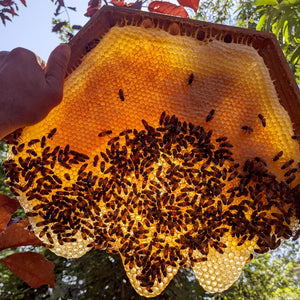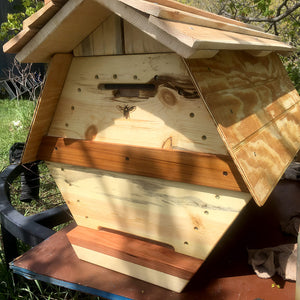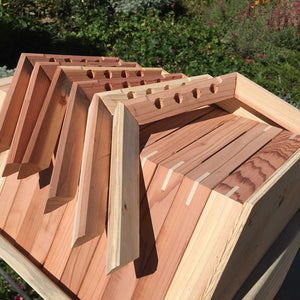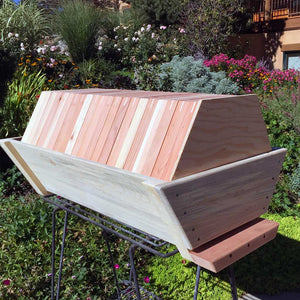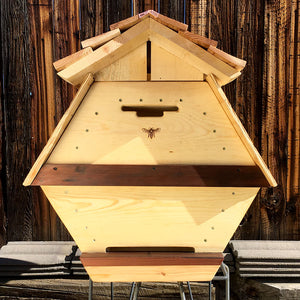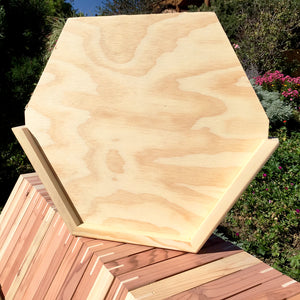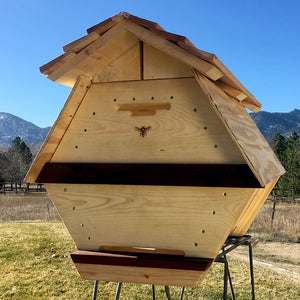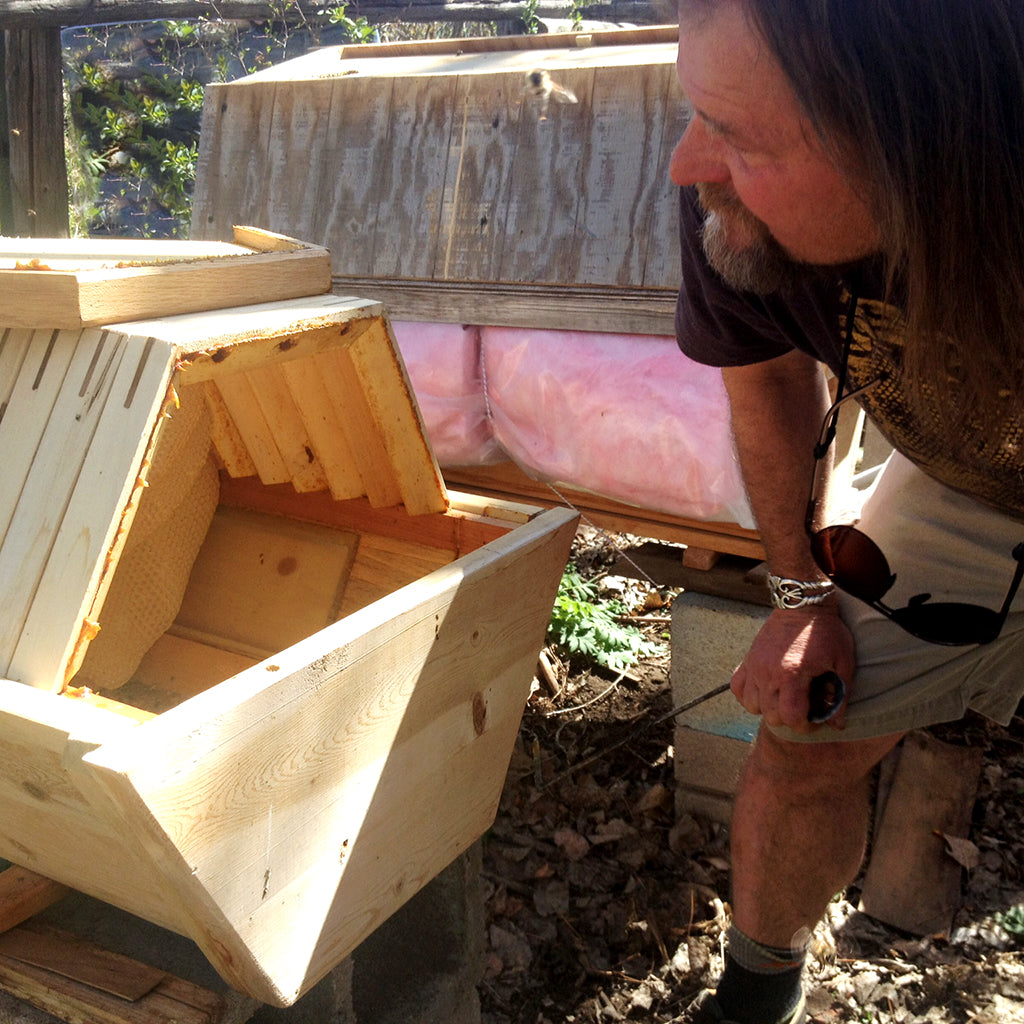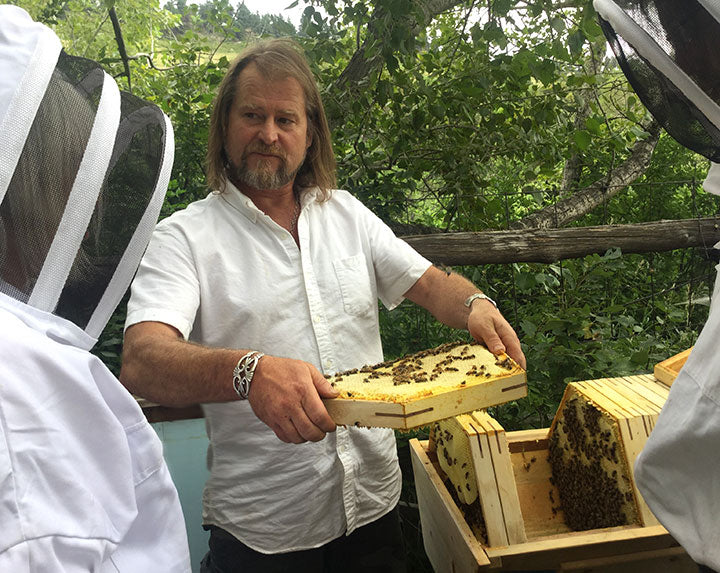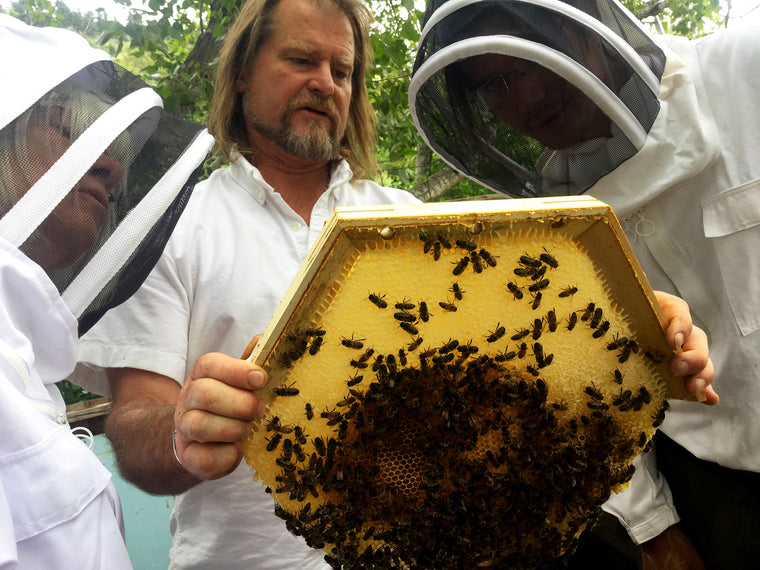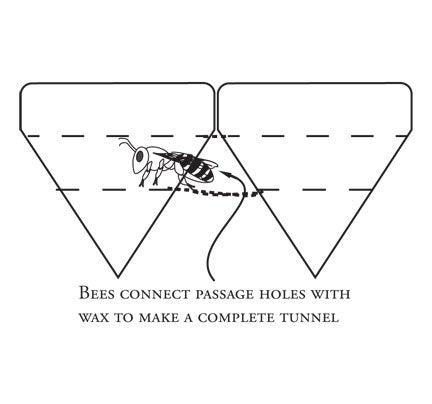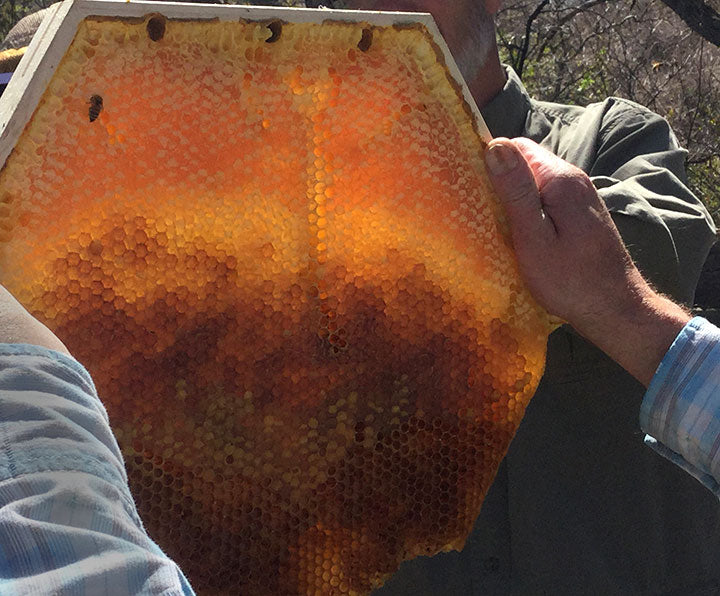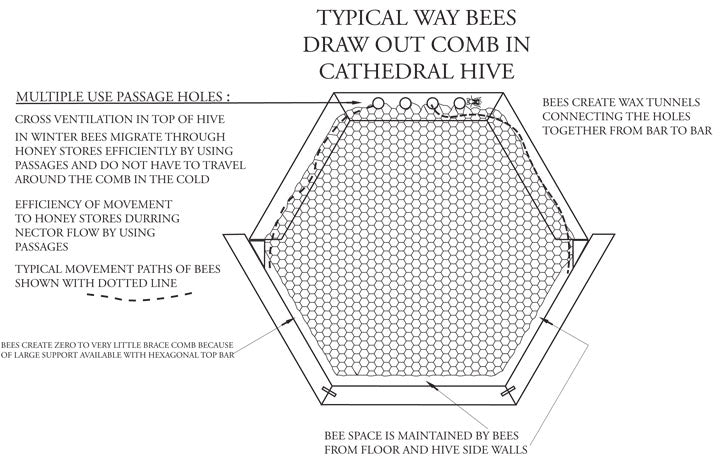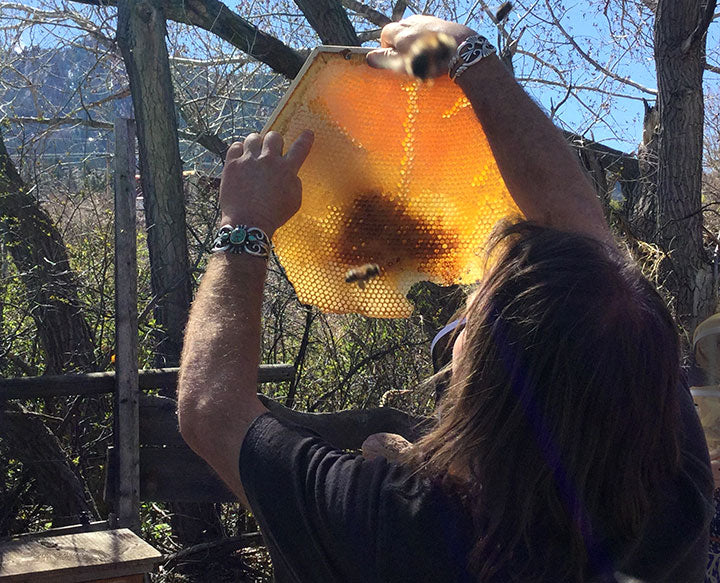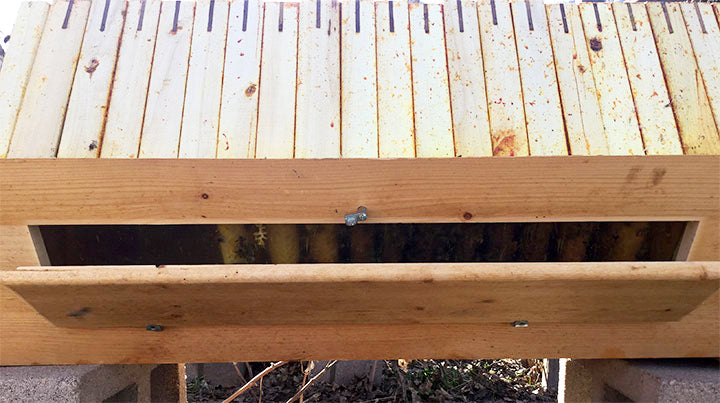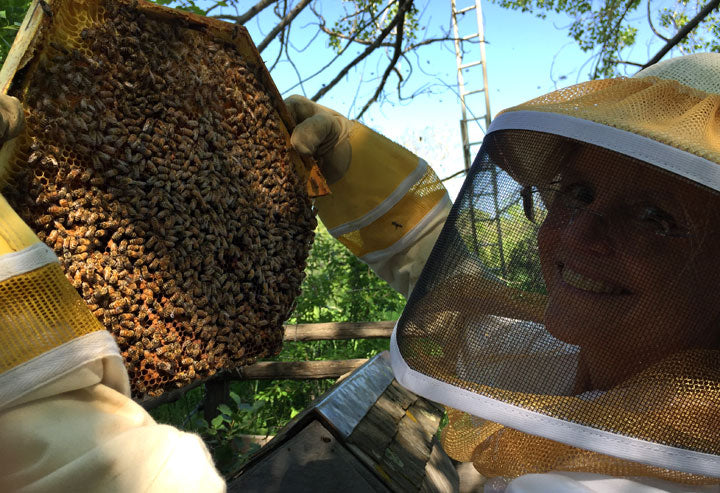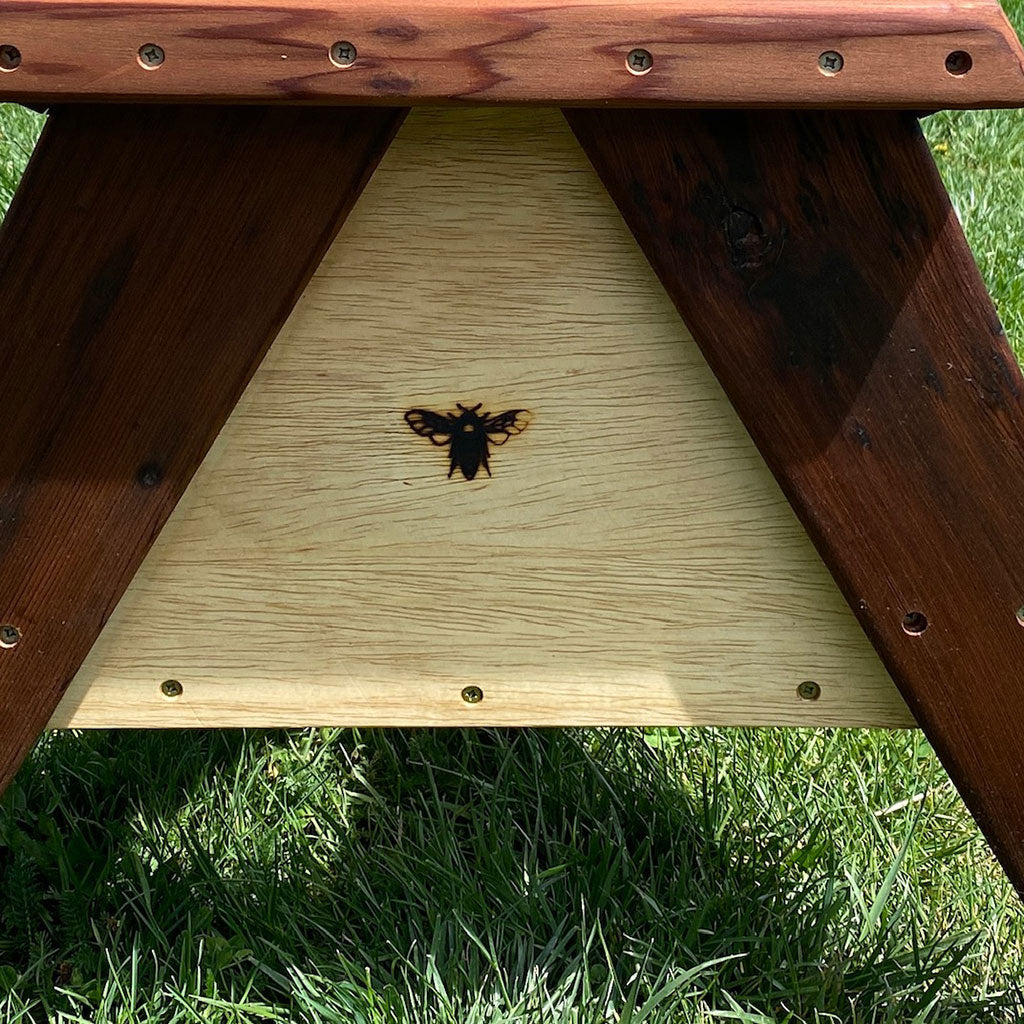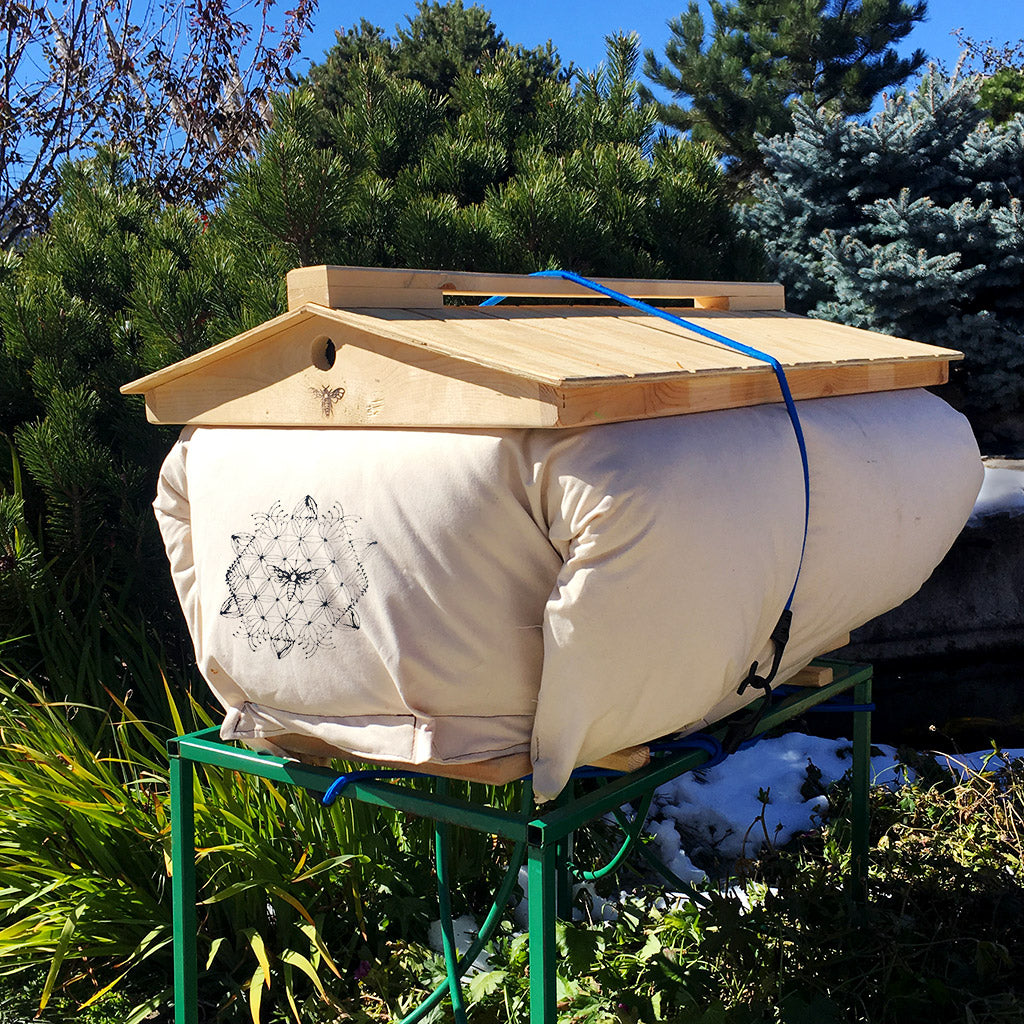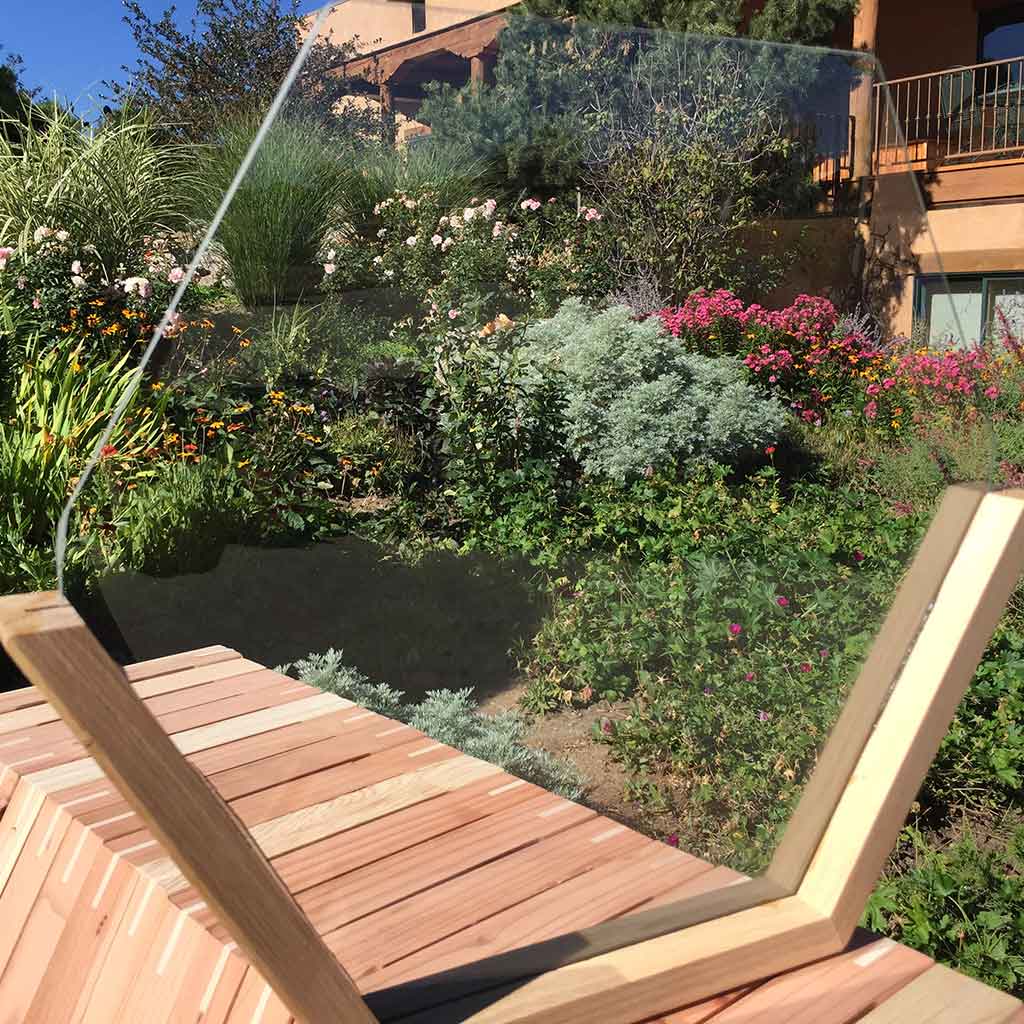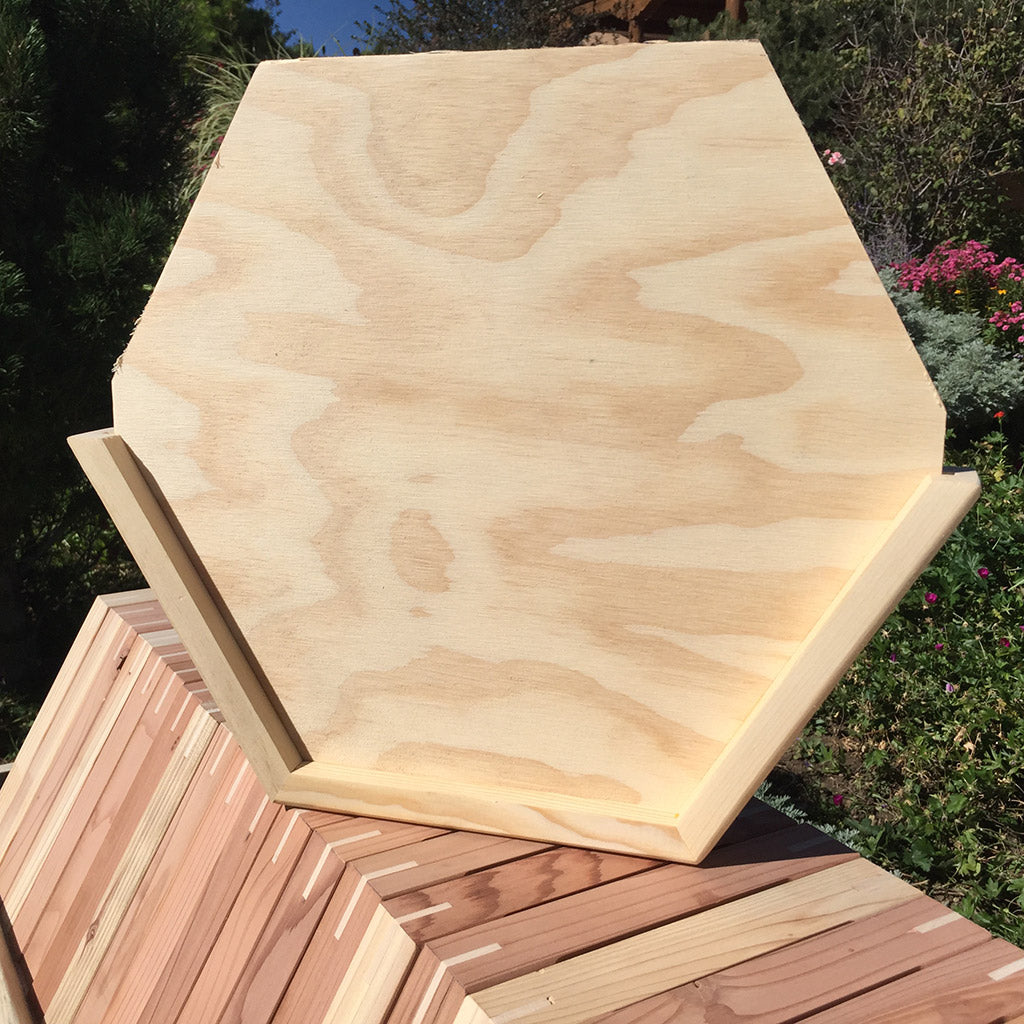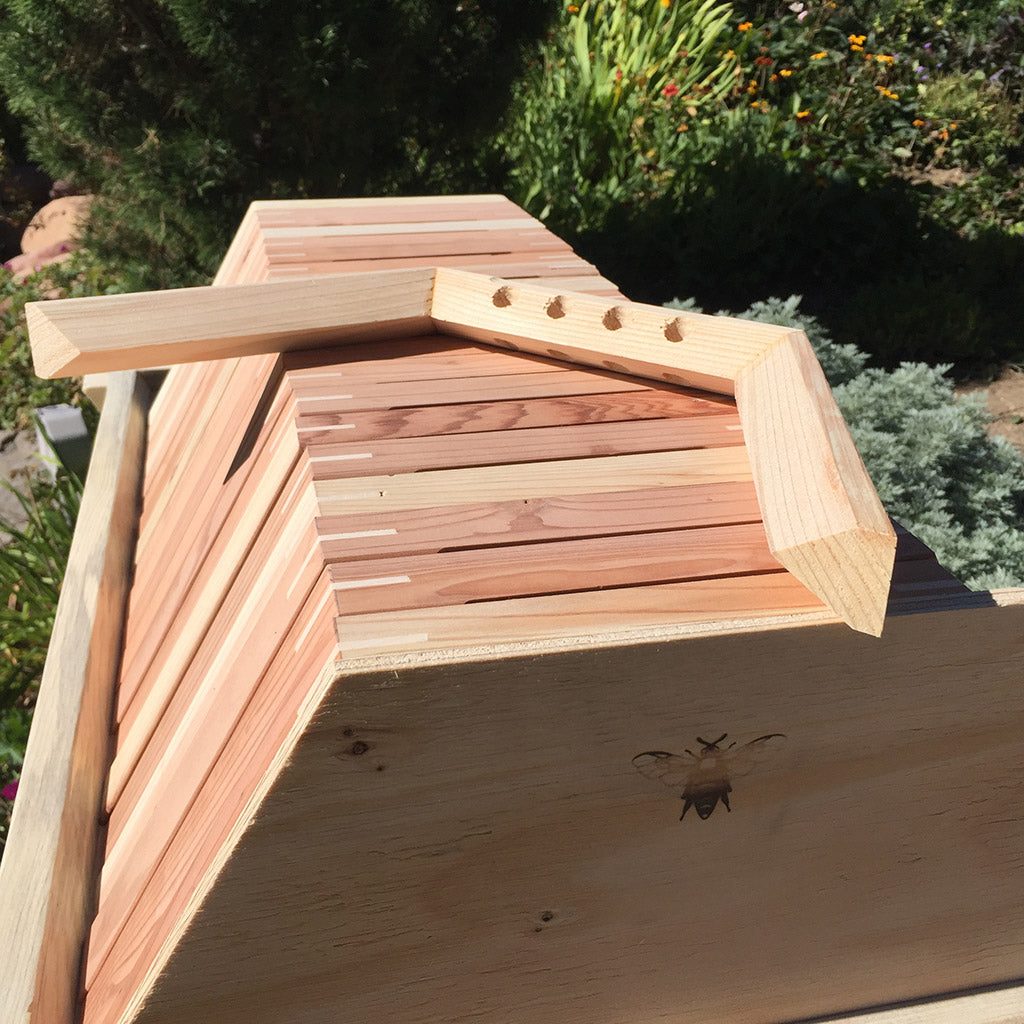"From the moment I peeked through the back of the Cathedral Hive, I was mesmerized. There was an order and calmness about the hive that I had not seen before. The bees hummed a beautiful sound that I had never heard. It's the easiest hive design I have ever worked with. You can see into it without moving any bars and when you do move bars, it is simple and clean because there are no comb attachments to the sides of the hive. The combs are super stable on the hex-shaped bars so there is no worry about breakage and dropping. It’s much bigger than my Golden Mean hives which will give my bees the room to create bigger, stronger colonies. I will be using Cathedrals for all of my future hives." ~ Matt S., Louisville, CO
"I LOVED the Cathedral Hive and desperately want a few. While the hexagonal shape was appealing because of comb shapes, it didn't exactly translate for me into a shape for a whole hive that the bees would necessarily gravitate to (I never saw a hexagonal bee tree.)
I was wrong. We looked at a bunch of Corwin's hives, and the Cathedrals were both the best. While certainly some of it could have been queen related, these hives had beautifully drawn comb, dense brood, and great pollen and capped honey, even when most of his other hives were almost starving because of the horrendous rains. You know how you have to (consciously or unconsciously) be very careful when handling laden top bars, (and while to be on the safe side, you should be with these, too), the cathedral bars (three wooden sides of the hexagon), made for a very substantial frame that was much more solid and protected, despite the fact that the volume of comb on each was bigger than on standard top bars. The holes cut in the bars were clearly used by the bees, helping them communicate and travel. I have made about ten of Corwin's golden mean hives, and can't wait to make a few of these cathedrals once the plans are available. Just as with the Golden Mean bars, however, which I found much harder to make than I liked, I am hoping he makes the Cathedral bars available for purchase so I don't have to try to make them. I don't know if he has done it yet, but the idea of the living roof is so cool!" ~ Dr Mark S., Pennsylvania
Credits for the Cathedral Hive®
New truly bee-centric innovations are rare these days and if they are fully realized, they are usually born of the passion and commitment of many individuals with sensitivity and creativity. Rather than feeling that I am launching a product, I feel more that we are launching a concept or an art project. So, I want to do a call out to everyone who helped to create the Cathedral Hive® from the initial ideas to those who stuck with me and helped to perfect it.
I would like to thank the Bee Doctors who came to our retreats and worked the Cathedral Hives® in total secrecy, : ) while sharing their ideas, observations, their joy and amazement, which inspired me to finalize the design and get it out to the world. Yay! This years' colonies in the Cathedral Hives® have done so well, that I finally felt we hit the mark and are now ready to offer this most endearing hive design to others.
Dave and I have worked together on anything wood, including a couple of wooden sea kayaks we built together. Dave builds all our hives for backyard hive, along with an occasional elf around Christmas time. Dave and I have spent years and countless hours perfecting the Cathedral Hive® and Dave has put up with “can we just build another quick prototype to test this” or “sorry I just put bees in the demo hive, I couldn't resist” and “can you make up another one for my workshop this weekend?” Dave is a great designer that knows wood, is fun to work with and loves bees, so how could you ask for more?
Ernie Schmidt, thank you for your amazing insights into the mysterious holes in the comb and the idea of how one might incorporate these holes into the combs of the bee hive.
Karen, as you might know makes everything happen at Backyard Hive. She is the Propolis that seals and heals our virtual hive, she fills the cracks and holds things together. Karen, has the ability to, at the perfect moment, when we were totally baffled on some way to do a hive feature, calmly comes up with the solution.
During my early in my pursuits of creating a new Hexagonal hive, I found inspiration from several others who had experimented with Hexagonal hives. Thank you Marco Lamm, your inspiration helped to create a wonderful hive that bees and Bee Guardians are really going to enjoy for years to come. I would also like to thank Gunter Hauk and Toni Wilkinson for creating the first Hexagonal hives that I had seen almost 10 years ago, that got me thinking and exploring.
Joy of working the Cathedral Hive®
If you have been following along with our newest methods of working with the bees, rather then against them with smoke and other strange beekeeping practices, you would have seen how we use a technique we call “herding the bees”. Rather then brushing bees off into the air or back into the hive, we move the bees to different parts of the hive that we are not working. We do this with a “herding tool”. This is such a gentle technique that the bees are much more calm when working the hive. With the passage holes in the top bars, when we begin to herd, the bees actually run for the holes and disappear into the hive, rather then collect in masses on the top or sides of the hive. Wow, where did all the bees go?

